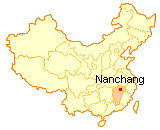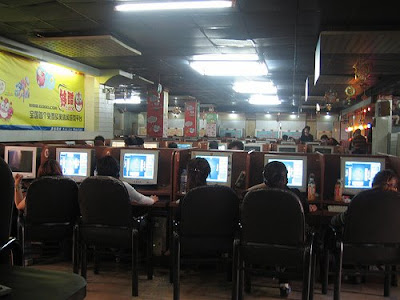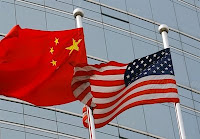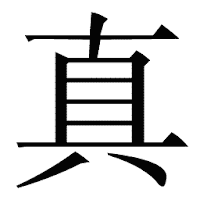Since 1997, Hong Kong is part of the People’s Republic of China (PRC). But the former British crown colony has a very different and nearly autonomous jurisdiction from its motherland. How do the PRC and Hong Kong relate to each other in regard to the protection and enforcement of intellectual property rights (IPR)?
United but different
On 19 December 1984 the governments of the PRC and the United Kingdom signed the Sino-British Joint Declaration on the Question of Hong Kong[1]. The PRC and the United Kingdom declared together that under the principle of “One Country, Two Systems”, Hong Kong would keep its capitalist system and retain its own laws and a high degree of autonomy for 50 years. These policies are codified in the Basic Law[2] that came into effect on 1 July 1997. As of that moment Hong Kong would be called a Special Administrative Region of the PRC. The Basic Law is a kind of mini-constitution of Hong Kong, on which all legislation of Hong Kong is based.
(In)dependent jurisdiction
IPR has been dominated by the territoriality principle[3]. This means that the territorial scope of any IP law of a jurisdiction shall be limited to the border of that jurisdiction.
Therefore, if one has registered a trademark or design-patent, invention-patent or utility-patent in the PRC it does not mean that one has registered a trademark, industrial design, patent or utility model in Hong Kong. And if one has registered an IPR in Hong Kong one has not registered a IPR in the PRC, either. Copyright is an automatic right, which arises when it is created. Copyright registration is not needed in the PRC nor in Hong Kong, because of the ‘no formalities provision'[4] of the Berne Convention to which the PRC is a signatory[5] and to which Hong Kong implicitly is a member. However, in the PRC you can register your copyright with the National Copyright Administration, which can be helpful to establish prima face evidence, for example ownership. According to the Hong Kong Intellectual Property Department (IPD) registration is not needed to get protection under the law[6]. The territoriality also designates the law of the jurisdiction where the protection is sought as the applicable law to the infringement suit[7]. However, parties can contractually put aside this conflict-of-law rule.
An interesting dependence between the United Kingdom, Hong Kong and the PRC can still be observed in relation to the grant of a standard patent in Hong Kong[8], which can only be granted if it is based on the registration of a patent granted by one of the following three patent offices: PRC’s State Intellectual Property Office (SIPO), the European Patent Office (EPO), in respect of a patent designating the United Kingdom or the United Kingdom Patent Office.
Civil Law versus Common Law tradition
The PRC uses a Civil Law[9] system that is heavily influenced by the German Civil Code[10], Japanese law[11], which itself was influenced by German law and by Socialist Law[12].
The Basic Law of Hong Kong guarantees[13] that Hong Kong courts continue to follow[14] the Common Law[15] tradition, which it inherited from the British. A difference between the Civil Law and Common Law tradition is that in the first the important principles are stated in the civil code, while the statutes complete them; while in the latter the law evolves via jurisprudence and in addition is amended by statute. However, in the area of IPRs, statute law is overwhelmingly important[16] in all jurisdictions, including in the Common Law jurisdiction of Hong Kong.
Another difference is that in Civil Law jurisdictions courts are held to the interpretations by higher courts, while the lower courts in Common Law jurisdictions are bound to follow the reasoning of the interpretation of the higher courts. However, in practice, the people’s courts follow the interpretations of the laws by the Supreme People’s Court, because of its authoritative status. Theoretically Hong Kong’s courts have to follow not only the precedents of Hong Kong’s highest court, the Court of Final Appeal, but also those of the English Court of Appeal. Since the Basic Law of Hong Kong guarantees that Hong Kong should continue its Common Law system, one can argue that post-1997 English court judgments, which might reflect the English pre-handover law more accurately than the post-1997 judgments by the Hong Kong courts, should be applied. However, in practice, post-1997 English court judgments have no binding effect in Hong Kong[17].
Pre-trial evidence versus Discovery
Although most jurisdictions that follow the Common Law tradition have no civil trial by jury anymore, the historical need to bring together a number of citizens to hear the testimony of witnesses, observe the evidence, find the facts, and to apply the facts to the law under instructions from a judge; explains why the civil proceedings in the Common Law tradition is shaped as a single concentrated event[18]. According to Merryman, in Civil Law jurisdictions “[d]iscovery is less necessary because there is little, if any, tactical or strategic advantage to be gained from the element of surprise”[19], in which he is referring to the civil proceedings that are spread out “over a series of isolated meetings of and written communications between the counsel and judge, in which the evidence is introduced, testimony given, procedural motions and rulings are made.”[20]
Merryman noticed a trend in Civil Law jurisdictions toward concentration of the civil proceedings. This could a fortiori be true for IPR proceedings.
Although the PRC Civil Law system does not have a formal discovery process, it provides for preliminary measures to preserve evidence before a party initiates legal proceedings, which could have the same function. Article 74 of the PRC’s Civil Procedure Law[21] in general and article 50 of the PRC’s Copyright Law[22], article 58 of the PRC’s Trademark Law[23] and article 61 of the PRC’s Patent Law[24] for the respective IPRs. Article 65 of the PRC’s Civil Procedure Law[25] states: “The people’s court has the right to acquire evidence from the relevant units and individuals, and they shall not refuse it.” However, article 65 of the PRC’s Civil Procedure law is seldom used.
Hong Kong’s Civil Justice Reform[26] includes legislation that gives the court the authority to order pre-action discovery between the parties and post-commencement discovery against non-parties in all types of civil claims[27], including IPR related ones. It is believed that, with greater transparency between the parties at an early stage, the prospects of an early settlement could be enhanced.
Chinese versus Chinese and English
In the PRC, Chinese is the only official language. English translations of law are for reference only. In Hong Kong English is an official language[28] next to Chinese (Cantonese or Mandarin) and may also be used by the Hong Kong judiciary. Hong Kong can be praised that it not only offers all legislation bilingually[29], but that all legal proceedings be held in English at the party’s request[30].
Transparency
In order to determine whether a legal system is effective one should be able to know what is actually happening. One of the fundamentals is to be able to find the right law, regulation or judicial interpretation. In the PRC there is still room for improvements[31]. In Hong Kong this is nearly perfect: all laws and regulations can be easily found online[32].
Rule by Law versus Rule of Law
The rule of law is arguably the single most important legal principle[33] for any judicial system. It is intended to safeguard against arbitrary governance. Governmental authority can only be exercised legitimately in accordance with written and publicly disclosed laws and enforced in accordance with established procedure. If a state follows the rule of law and apply the law consistently, uniformly and in an impartial way, the societal benefits are legal security for the citizens and, according to the Political and Economic Risk Consultancy (PERC)[34] “[b]etter judicial systems are associated with better IPR protection, lower corruption and wealthier economies.”[35]
The PRC’s leadership clearly wants to restrict lower government authorities to the rule of law. In a survey[36] by PERC 1,537 corporate executives were asked to rate the judicial systems in the Asian countries where they work, using such variables as the protection of IPR, corruption, transparency, enforcement of laws, freedom from political interference and the experience and educational standards of lawyers and judges. PERC states that the less favourable perception of the PRC’s judicial system is rooted in political interference, and that the Communist Party is above the law. According to the PERC survey Hong Kong has the best judicial system of Asia. The PRC can only be found on place 11[37].
(In)dependent judiciary
The PRC’s Constitution[38] promulgates that the people’s courts exercise their judicial power independently, without any interference by any administrative organ, public organisation or individual. However, in contradiction to this principle, article 128 PRC’s Constitution[39] states that courts report to the corresponding level of the people’s congresses that created them. At the highest level, the Standing Committee of the National People’s Congress is superior to the Supreme People’s Court: it has the final word when it comes to the interpretation[40] or invalidating[41] of laws by the Supreme People’s Court. Also, the People’s Procuratorate Bureau exercises supervision over the judiciary, leading to the situation where procurators are subject to the authority of the court when they appear before the court as a prosecutor and yet have the authority to challenge the “final” decisions of the court[42].
Hong Kong enjoys a much higher degree of independent judicial power[43], including that of final adjudication. However, it should be noted that the power of interpretation of Hong Kong’s Basic Law is vested in the Standing Committee of the National People’s Congress, which authorises the courts of Hong Kong to interpret on their own, if it concern affairs that are outside the responsibility of the Central People’s Government or do not concern the relation between the PRC and Hong Kong[44]. And then there was the incident in 1999 that the government of Hong Kong ignored an interpretation of the Basic Law by its highest judiciary, the Court of Final Appeal. Instead it sought assistance from the National People’s Congress to come up with an interpretation[45].
Reciprocal agreement of judgments
The PRC and Hong Kong have a mutual recognition of arbitration findings and since July 14, 2006, also the mutual enforcement of court rulings on IP infringements, which is called: Reciprocal Enforcement of Judgments in Civil and Commercial Matters by the Supreme Court of the PRC and the Secretary of Justice of Hong Kong. The arrangement initially only applies to money judgments of commercial cases[46]. Since the parties need to agree on an exclusive jurisdiction clause, the reciprocal agreement of judgments seems to be of limited value in its current form for IPR cases. Most infringements of IPRs are done by unknown parties with whom the IPR right holder has not made any agreements[47].
IPR enforcement in PRC and Hong Kong
Although great gains have been made to date, most people would agree that there is still plenty of improvement in regard to the PRC’s national IPR strategy[48]. Although it is not fair to compare the effectiveness between the PRC and Hong Kong, because Hong Kong is much more synoptic, the government of Hong Kong has shown an unstinting commitment to innovative ways to protect and enforce IPRs. The general perception is that the Hong Kong government is effective in protecting and enforcing IPRs. However, this has not always been the case. Only in 1997, the year that the sovereignty of Hong Kong was returned to the PRC, Hong Kong was put on the 301 Watch List created by the United States Trade Representative (USTR). According to this trade policy adviser to the US President, Hong Kong had problems with IPR protection and enforcement. In 1998 the then Trade and Industry Bureau, the IPD and Customs & Excise Department C&ED worked together to enact and implement a series of amendments to the copyright related legislation[49]. In 1998 the C&ED also set up a Special Task Force to target pirate optical disc outlets. Statistics show the decrease in copyright infringements[50]. In 1999 Hong Kong was removed from the 301 Watch List.
Innovative ways of IPR protection and enforcement in Hong Kong include the “No Fakes” label scheme, to be displayed at shops. In March, 2004, more than 380 retail merchants covering 2,300 outlets have joined the Scheme. The alliance will help monitor and report any counterfeiting and piracy activities. In 2008 the concept was followed by Shanghai[51]. Sometimes the Hong Kong government gets criticism because of perceived excessive anti-counterfeit and piracy measures[52]. This includes recruiting children for IPR surveillance and Mr Chan Nai-ming was the first person in the world that was convicted and sentenced because of uploading movies via BitTorrent. After two appeals Mr Chan was convicted by the Court of Final Appeal to serve a three-month prison term for uploading the movies Daredevil, Miss Congeniality and Red Planet without permission[53] [54].
Hong Kong Tolerates Shadow Companies to the Disadvantage of the PRC
Despite Hong Kong’s successes in the field of IPR protection and enforcement, there are still some problems left that need attention. PRC entities are setting up companies in Hong Kong with company names that are “inherently distinctive”, according to the current legislation, but very similar to well-known trademarks, and accepted by the Hong Kong Trade Marks Registry. These so called shadow companies usually engage in counterfeiting activities in the PRC. In the PRC they show official copies of their Hong Kong certificates of incorporation to Chinese manufacturers[55], who will churn out infringed and pirated goods in good faith. One can argue that the Hong Kong Companies Registry is interpreting the Companies Ordinance Chapter 32, Section 22 (2) and Section 22A and Section 291 too restrictive[56].
Conclusion
Although Hong Kong is part of the PRC it has a separate jurisdiction. Therefore, IPRs need to be registered in each jurisdiction separately, with the exception of copyright. Hong Kong misses a lot of the extra-judicial factors that make enforcement of IPRs difficult. It is the perception of executives in Asia that Hong Kong has the best judicial system, which seems to correlate with good IP enforcement, lower corruption and a wealthier economy. Hong Kong’s judiciary is nearly completely independent from government interference. Legal proceedings in the PRC can only be done in Chinese, in Hong Kong this can be done in both Chinese or English. The transparency in Hong Kong is much bigger than in the PRC. The Reciprocal Agreement of Judgments between the PRC and Hong Kong has not yet great value in relation to IPR cases. The Hong Kong government has developed itself into an effective IPR protector and enforcer using innovative strategies, with the exception of shadow companies.
Danny Friedmann
[1] An Agreement between the Government of the United Kingdom of Great Britain and Northern Ireland and the Government of the People’s Republic of China on the Future of Hong Kong signed on 19 December 1984, available at:
http://www.hkbu.edu.hk/~pchksar/JD/jd-full1.htm.
[2] The Basic Law was drafted by a committee composed of members from Hong Kong and the Mainland. It was adopted on 4 April 1990 by the Seventh National People’s Congress of the PRC and it came into effect on midnight 1 July 1997.Basic Law of the Hong Kong SAR available at:
http://www.basiclaw.gov.hk/en/basiclawtext/index.html.
[3] Koizumi, Naoki,’Territorial Principle (TP) in Intellectual Property Law’, September 11, 2000, available at:
http://www.ilpf.org/events/jurisdiction2/presentations/koizumi_pr.
[4] Article 5(2) Berne Convention: “The enjoyment and the exercise of these rights shall not be subject to any formality; such enjoyment and such exercise shall be independent of the existence of protection in the country of origin of the work. Consequently, apart from the provisions of this Convention, the extent of protection, as well as the means of redress afforded to the author to protect his rights, shall be governed exclusively by the laws of the country where protection is claimed.”
[5] The PRC is a contracting party to the Berne Convention, 15 October 1992, including Hong Kong since 1 July 1997, available at:
http://www.wipo.int/treaties/en/ShowResults.jsp?lang=en&treaty_id=15.
[6] Intellectual Property Department, ‘Copyright Law in Hong Kong’, available at:
http://www.ipd.gov.hk/eng/pub_press/publications/hk.htm.
[7] Koizumi, see note 3.
[8] Intellectual Property Department, ‘How to apply for grant of patents in Hong Kong SAR?’, available at:
http://www.ipd.gov.hk/eng/intellectual_property/patents/how_to_apply.htm#p18.
[9] “Civil law may be defined as that legal tradition which has its origin in Roman law, as codified in the Corpus Juris Civilis of Justinian, and as subsequently developed in Continental Europe and around the world. (..) Civil law is highly systematised and structured and relies on declarations of broad, general principles, often ignoring the details,” Tetley, William, ‘Mixed jurisdictions: common law vs civil law (codified and uncodified)’, UNIDROIT, 1999, available at:
http://www.unidroit.org/english/publications/review/articles/1999-3.htm.
[10] Jones, William C., ‘Basic Principles of Civil Law in China’, M.E. Sharpe, 1989, pg xvi.
[11] “[W]ith the law reform in the late Qing Dynasty and continuing through today, the formation and development of modern Chinese civil law has been deeply influenced by theories of Pandekten law (German Roman law, Danny Friedmann), ex-Soviet law and Japanese law. The academic background of the first generation of Chinese civil jurists, most of whom had studied German civil law in Germany, and the unprejudiced help from Japanese jurists resulted in modern Chinese civil law thoroughly inheriting the basic juristic theory and content of German law – one sees the deep influence of the German Civil Code in the first Chinese Civil Code,” Sun, Xianzhong, ‘The Reception of Western Civil Law Theory and its Effect on Modern China’, Rabels Zeitschrift fü ausländisches und internationals Privatrecht, Volume 71, Number 3, July 2007, pp. 644-662.
[12] Since 1978 when Deng Xiaoping declared the PRC a socialist market economy, Socialist Law is losing ground.
[13] Article 8 Basic Law, see note 2.
[14] Wesley-Smith, Peter,’The Sources of Hong Kong Law’, Hong Kong University Press, 1994, pg. 117.
[15] “Common law is the legal tradition which evolved in England from the 11th century onwards. Its principles appear for the most part in reported judgments, usually of the higher courts, in relation to specific fact situations arising in disputes which courts have adjudicated. The common law is usually much more detailed in its prescriptions than the civil law. Common law is the foundation of private law, not only for England, Wales and Ireland, but also in forty-nine U.S. states, nine Canadian provinces and in most countries which first received that law as colonies of the British Empire and which, in many cases, have preserved it as independent States of the British Commonwealth,”Tetley, see note 2.
[16] “Though potentially misleading in an area such as intellectual property, where statute law is overwhelmingly important in all jurisdictions, the expression “common law” jurisdiction is adequate to denote jurisdictions historically rooted in the English legal tradition: the United Kingdom, most of the United States of America, much of Canada, Australia, New Zealand, Singapore, Hong Kong, Malaysia and many other places,”
Allsop, Justice James,’Discovery in intellectual property litigation’ FICPI Conference, Venice, October 2004, available at:
http://www.ficpi.org/library/veniceForum/3_1_Allsop.pdf.
[17] Fisher, Michael J., Desmond G. Greenwood, ‘Contract Law in Hong Kong’, Hong Kong University Press, 2008, pg. 33.
[18] Merryman, John, John Henry Merryman, Rogelio Pérez-Perdomo, ‘The Civil Law Tradition: An Introduction to the Legal Systems of Europe and Latin America’, Stanford University Press, 2007, pg. 113.
[19] Merryman, see note 18, pg 114.
[20] Merryman, see note 18, pg. 114.
[21] Article 74 PRC’s Civil Procedure Law: “Under circumstances where there is a likelihood that evidence may cease to exist or be lost or difficult to obtain later on, the participants in proceedings may apply to the people’s court for the evidence to be preserved, the people’s court may also take measures to preserve such evidence on its own initiative,” available at:
http://www.lehmanlaw.com/resource-centre/laws-and-regulations/civil-proceedings/law-of-civil-procedure-of-the-peoples-republic-of-china-1991.html.
[22] Article 50 of the PRC’s Copyright Law: “For the purpose of preventing an infringing act and under the circumstance where the evidence could be lost or is difficult to obtain at1erwards, the copyright owner or the owner of a copyright-related right may apply to the People’s Court for evidence preservation before initiating legal proceedings. The People’s Court must make the decision within forty-eight hours after it accepts an application; the measures of preservation shall be taken without delay if it is decided to do so. The People’s Court may order the applicant to provide a guaranty, if the latter fails to do so, the Court shall reject the application. Where the applicant fails to institute legal proceedings within fifteen days after the People’s Court adopted the measures of preservation, the latter shall terminate the measures of preservation,“ available at:
http://english.ipr.gov.cn/ipr/en/info/Article.jsp?a_no=1962&col_no=118&dir=200603.
[23] Article 58 of the PRC’s Trademark Law: “In order to stop an infringing act, any trademark registrant or interested party may file an application with the People’s Court for preservation of the evidence before instituting legal proceedings in the People’s Court where the evidence will possibly be destroyed or lost or difficult to be obtained again in the future. The People’s Court must make adjudication within forty-eight hours after receipt of the application; where it is decided to take the preservative measures, the measures shall be executed immediately. The People’s Court may order the applicant to place guaranty; where the applicant fails to place the guaranty, the application shall be rejected. Where the applicant institutes no legal proceedings within fifteen days after the People’s Court takes the preservative measures, the People’s Court shall release the measures taken for the preservation,” available at:
http://english.ipr.gov.cn/ipr/en/info/Article.jsp?a_no=2170&col_no=119&dir=200603.
[24]Article 61 of the PRC’s Patent Law: “Where any patentee or interested party has evidence to prove that another person is infringing or will soon infringe its or his patent right and that if such infringing act is not checked or prevented from occurring in time, it is likely to cause irreparable harm to it or him, it or he may, before any legal proceedings are instituted, request the people’s court to adopt measures for ordering the suspension of relevant acts and the preservation of property. The people’s court, when dealing with the request mentioned in the preceding paragraph, shall apply the provisions of Article 93 through Article 96 and of Article 99 of the Civil Procedure Law of the People’s Republic of China,” available at:
http://www.lehmanlaw.com/resource-centre/laws-and-regulations/intellectual-property/patent-law-of-the-peoples-republic-of-china-2001.html.
[25] PRC’s Civil Procedure Law, see note 21.
[26] Chief Justice Andrew Li said during the opening of the 2008 legal year that the target date to bring into force the relevant legislation of the Civil Justice Reform is 2 April 2009, available at:
http://www.info.gov.hk/gia/general/200801/14/P200801140146.htm.
[27] Esler, Lindsay, Deacons HK IP Bulletin, April 2008, available at:
http://www.deacons.com.hk/eng/knowledge/knowledge_303.htm.
[28] Article 9 Basic Law of Hong Kong: “In addition to the Chinese language, English may also be used as an official language by the executive authorities, legislature and judiciary of the Hong Kong Special Administrative Region.”
[29] Bilingual Law Information System, available at:
http://www.legislation.gov.hk/eng/index.htm.
[30] Section 3 Hong Kong’s Official Languages Ordinance:
Official languages and their status and use (1) The English and Chinese languages are declared to be the official languages of Hong Kong for the purposes of communication between the Government or any public officer and members of the public and for court proceedings. (Amended 51 of 1995 s. 2)
(2) The official languages possess equal status and, subject to the provisions
of this Ordinance, enjoy equality of use for the purposes set out in
subsection (1), available at:
http://www.hklii.org/hk/legis/en/ord/5/s3.html[31] To find more about the PRC’s lack of transparency, see Friedmann, Danny, ‘Paper Tiger or Roaring Dragon, TRIPs Implementations and Enforcement’, 10 July 2007, available at:
http://www.nfprojects.nl/ipdragon/Paper_Tiger_or_Roaring_Dragon.pdf.
[32] Bilingual Law Information System, see note 29.
[33] Rule of law is one of the principles of Baron de Montesquieu, ‘The Spirit of the Laws’, 1748, available at:
http://www.constitution.org/cm/sol.htm.
[34] Political and Economic Risk Consultancy (PERC), available at:
http://www.asiarisk.com/.
[35] AFP, ‘Hong Kong has best judicial system in Asia: business survey’, September 14, 2008, available at:
http://afp.google.com/article/ALeqM5gIkKvk-YnNQ1HVb2n_HUUMhncDLA.
[36] PERC survey of September 10, Comparing Asia’s judicial systems, see note 34.
[37] Zero representing the best performance, 10 the worst
1. Hong Kong 1.45
2. Singapore 1.92
3. Japan 3.50
4. South Korea 4.62
5. Taiwan 4.93
6. Philippines 6.10
7. Malaysia 6.47
9. India 6.50
10. Thailand 7.00
11. China 7.25
12.Vietnam 8.10
13. Indonesia 8.26
[38] Article 126 PRC Constitution, available at:
http://english.people.com.cn/constitution/constitution.html.
[39] See note 38.
[40] Article 43 PRC’s Legislation Law, available at:
http://english.gov.cn/laws/2005-08/20/content_29724.htm.
[41] Article 90 PRC’s Legislation Law, see note 40.
[42] Peerenboom, ‘China’s Long March Toward Rule of Law’, Cambridge University Press, 2002, pg 280.
[43] Article 2 Basic Law, see note 2.
[44] Article 158 Basic Law, see note 2.
[45] Report on Seeking Assistance from the Central People’s Government in Solving Problems Encountered in the Implementation of the Basic Law of the Hong Kong Special Administrative Region of the PRC, available at:
http://www.basiclaw.gov.hk/en/materials/doc/1999_05_20_e.doc.
[46] Wang, Angela, ‘Litigation: New Arrangement for the Reciprocal Enforcement between the PRC and Hong Kong’, January 2007, available at:
http://www.scchk.com.hk/announ/Reciprocal_Enforcement_of_Judgements_between_PRC_&_HK.pdf.

 Japanese sake and shochu brewers that want to start exporting to China were not amused when they found out that their brands have been registered by Chinese trademark squatters, that want to sell the trademarks to the Japanese brewers, especially since 2004. The Yomiuri Shimbun writes:
Japanese sake and shochu brewers that want to start exporting to China were not amused when they found out that their brands have been registered by Chinese trademark squatters, that want to sell the trademarks to the Japanese brewers, especially since 2004. The Yomiuri Shimbun writes:


















 A Free Trade Agreement (Tratado de Libre Comercio Perú – China) was announced at a summit in Lima, Peru, between President Alan Garcia and Hu Jintao, read CNN article about it
A Free Trade Agreement (Tratado de Libre Comercio Perú – China) was announced at a summit in Lima, Peru, between President Alan Garcia and Hu Jintao, read CNN article about it 















 September 16th US Commerce Secretary Carlos M. Gutierrez and US Trade Representative Susan c. Schwab, together with Chinese Vice Premier Wang Qishan convened the 19th US-China Joint Commission on Commerce and Trade (JCCT). Read the press release of the United States Trade Representative (USTR)
September 16th US Commerce Secretary Carlos M. Gutierrez and US Trade Representative Susan c. Schwab, together with Chinese Vice Premier Wang Qishan convened the 19th US-China Joint Commission on Commerce and Trade (JCCT). Read the press release of the United States Trade Representative (USTR)








 Reuters reports that Great Wall Motor Co Ltd made a statement saying that Fiat’s claim that Great Wall infringing their patent was dismissed by Shijiazhuang Intermediate People’s Court.
Reuters reports that Great Wall Motor Co Ltd made a statement saying that Fiat’s claim that Great Wall infringing their patent was dismissed by Shijiazhuang Intermediate People’s Court.